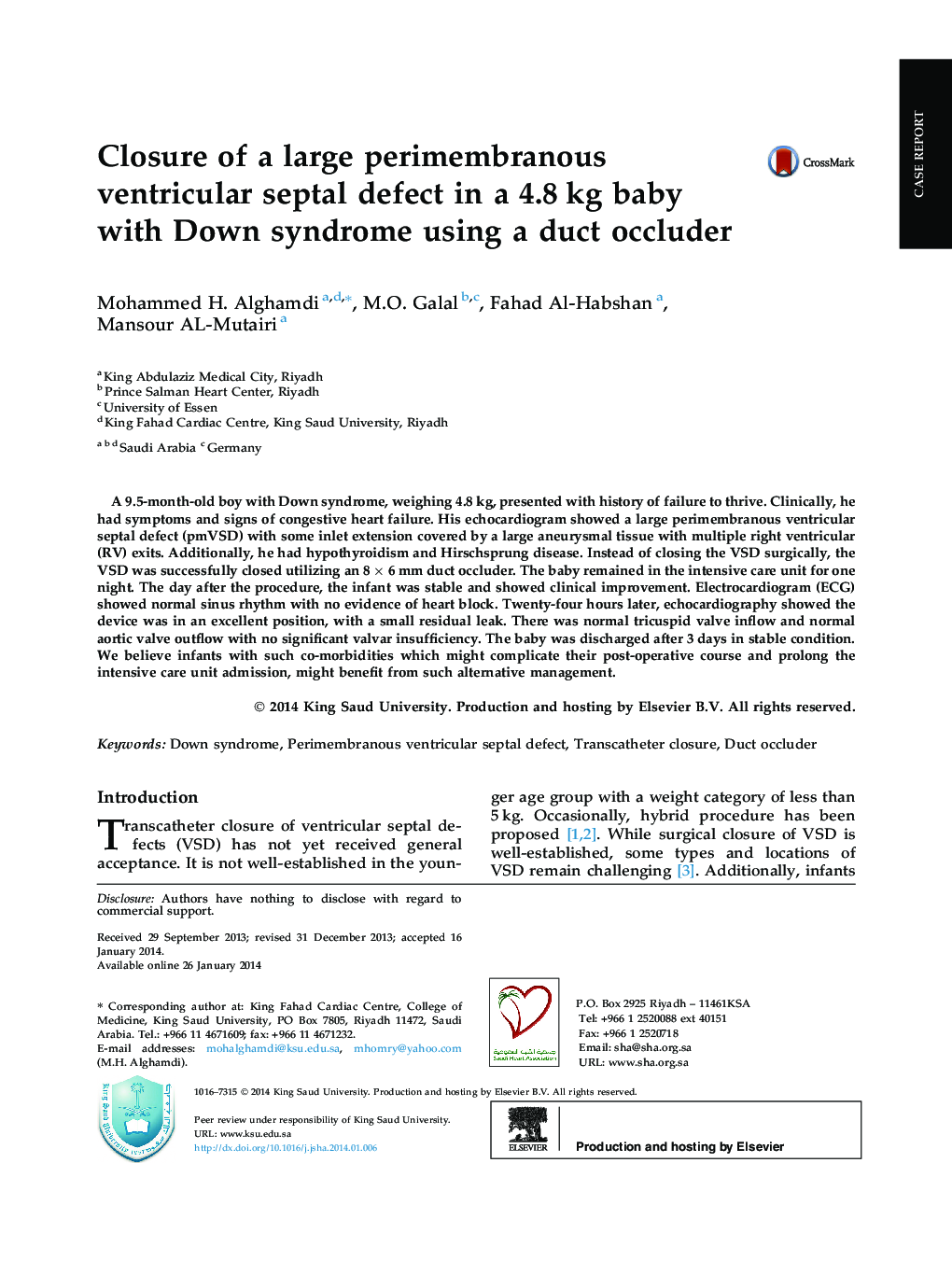| Article ID | Journal | Published Year | Pages | File Type |
|---|---|---|---|---|
| 2978042 | Journal of the Saudi Heart Association | 2014 | 6 Pages |
A 9.5-month-old boy with Down syndrome, weighing 4.8 kg, presented with history of failure to thrive. Clinically, he had symptoms and signs of congestive heart failure. His echocardiogram showed a large perimembranous ventricular septal defect (pmVSD) with some inlet extension covered by a large aneurysmal tissue with multiple right ventricular (RV) exits. Additionally, he had hypothyroidism and Hirschsprung disease. Instead of closing the VSD surgically, the VSD was successfully closed utilizing an 8 × 6 mm duct occluder. The baby remained in the intensive care unit for one night. The day after the procedure, the infant was stable and showed clinical improvement. Electrocardiogram (ECG) showed normal sinus rhythm with no evidence of heart block. Twenty-four hours later, echocardiography showed the device was in an excellent position, with a small residual leak. There was normal tricuspid valve inflow and normal aortic valve outflow with no significant valvar insufficiency. The baby was discharged after 3 days in stable condition. We believe infants with such co-morbidities which might complicate their post-operative course and prolong the intensive care unit admission, might benefit from such alternative management.
